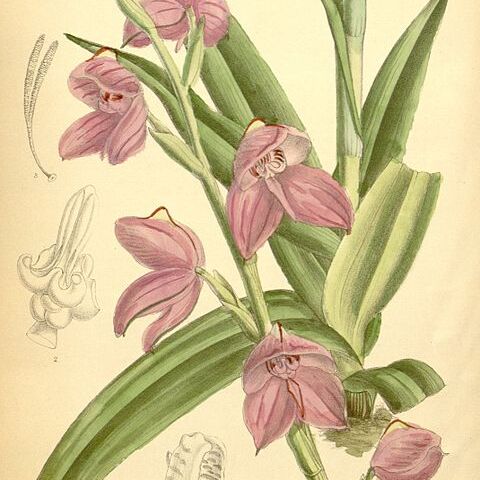Terrestrial herb, robust, geophyte, 0.3-1.0 m high; root tubers present. Leaves radical, narrowly lanceolate, grading into cauline leaves. Inflorescence a lax spike. Flowers 2-8, resupinate, pink with paler petals with horizontal purple bars. Sepals: median sepal dish-shaped; lateral sepals 15-25 mm long; spur obsolete. Petals reflexed parallel to anther, obliquely narrowly oblong, apex acute curved over anther. Lip patent, linear, ± 10 mm long. Flowering time Nov., Dec.
Slender, tuberous geophyte to 1 m. Leaves basal, narrowly lanceolate. Flowers few in a lax raceme, pale pink with darker veins, median sepal dish-shaped, lateral sepals oblong, 15-25 mm long.

